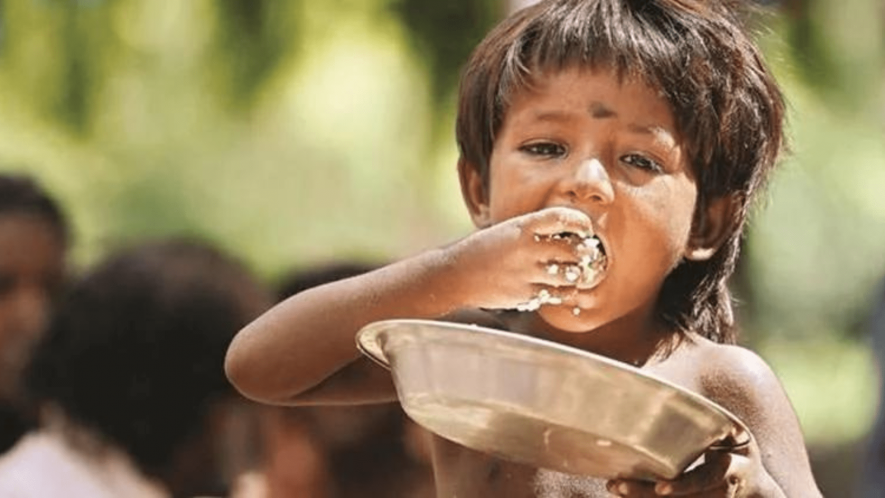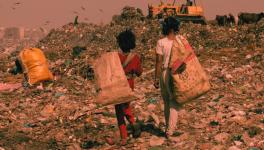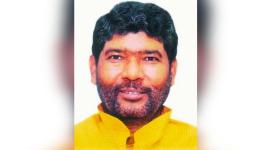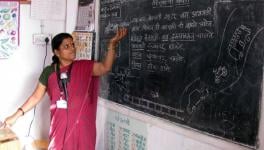NFHS 5: Govt in Denial on Marked Decline in Nutritional Intake

Representational image. (File Image)
The nutritional status of the Indian population has been going down slowly but surely during the last three decades, the period of neo-liberal economic reforms. The five-yearly National Sample Survey (NSS) reports on nutritional intake in India have been registering decline in per capita calorie intake as well as protein intake (but rise in fat intake, concentrated with the top spending groups).
The nutritional decline started earliest in rural India, with urban areas joining in the decline later. The most important source of energy and protein for our population is foodgrains, namely, cereals plus pulses, with cereals alone - that account for over nine-tenths of foodgrains –providing two-thirds of the average rural person's energy and protein intake.
Per capita cereal consumption fell during the three-decade period of neo-liberal reforms to such an extent, that for many years now India has registered a consumption level (taking both direct use of cereals as food and indirect use as feed for producing animal products like milk, eggs, poultry meat and so on) that is well below the level of Africa and below the level of the least developed countries.
Moreover, per capita real expenditure on food (namely, the nominal spending per capita on all food items, deflated by a consumer price index to make later years comparable to earlier years) has been falling as well for decades. Spending less per head on food starting from inadequate levels, is very strange for a country with high rates of growth of per capita GDP and this unprecedented trend, is only consistent with a sharp rise not only in inequality of incomes but also in absolute nutritional poverty within the population.
Economists have put forward all kinds of fallacious arguments to justify the prolonged fall in per capita food spending, and hence in nutritional intake, in India, such as mechanisation leading to lower energy needs, change in the age structure of the population, change in tastes and so on. Their arguments amount to pure apologetics and nothing else, when we see that every populous developing region in the world – including those with a similar population age structure and higher levels of mechanisation than India --consumes substantially more than Indians do and has better nutritional outcomes.
The latest figures from the UN Food and Agricultural Organisation (FAO) for the year 2019, give us India's per capita cereals consumed as food plus feed, right at the bottom at 171 kg compared with 190 kg for Africa, 205 kg for the least developed countries, 360 kg for both China and Brazil (above the world average of 304 kg), and 407 kg for Russia. The industrial North registers 494 kg consumption in the European Union and 590 kg in the US. Note that FAO does not collect data, which are provided to it by the governments of the countries concerned. Not surprisingly India ranks toward the very bottom, 107 out of 121 countries, in the Global Hunger Index.
The NSS report, Key Indicators of Household Consumer Expenditure 2017-18, was available briefly online last year in a publicly accessible domain and it showed for the first time, decline in per capita real spending on all goods and services compared with 2011, over and above the decline which has been going on for decades in per capita real food expenditure. It was promptly removed by the government in an unprecedented action of denying vital information to the public.
This is the background to the most recent, bizarre development in which the government has reportedly 'suspended' the director of the International Institute of Population Sciences, Mumbai, which is under the Ministry of Health and Family Welfare. The institute is responsible for carrying out the periodic National Family Health Survey (NFHS).
The fifth report of the Survey, relating to 2019-21, showed substantial worsening of some health indicators for children and women in particular, compared with the fourth report relating to 2015-16. This has, it seems, irked the government which has decided illogically to punish the messenger, who is an academic of probity, rather than heed the message.
Many indicators of health are not dependent on nutrition alone, and these can be improved through civic measures, like safe water supply, controlling disease bearing mosquitoes, snails and helminths, safe waste disposal and community healthcare. As in other countries, India too has registered progress though very slowly, on many indicators. But other indicators are largely dependent on nutritional status and are bound to show a worsening when nutritional intake itself is going down.
The NFHS 5, 2019-21, compared with the previous NFHS 4 of 2015-16, continued to show a decline in infant and child mortality rates though at a lower rate compared with the earlier years. But the incidence of anaemia in both children and adults, already very high, showed a further rise over the period. While 59% of children (sample aged 6 months to 59 months) were anaemic in 2015-16, this rose to 67% by 2019-21.
What is particularly disturbing is that the incidence of moderate to severe anaemia rose from 30.6% to 38.1%, while the incidence of mild anaemia remained unchanged at 28.4% and 28.9% at the two dates.
A rise in anaemia incidence among adults, particularly women, is also recorded over the same period. Among women (up to age 49 years) the rise was from 53% (of which 28.4% was moderate to severe anaemia), to 57% at the later date (of which 31.4% was moderate to severe anaemia).
Again, three-quarters of the rise was in moderate to severe anaemia. Among men (sample: up to the age of 49 years) the incidence was much lower, rising from 23% to 25% with the moderate to severe anaemia within this, rising from 5% to 8% and the mild anaemia category dropping slightly.
Rural children and adults showed higher anaemia incidence than the average and children of anaemic mothers were at higher risk of being anaemic. A responsible government is expected to take measures to address these adverse trends, not simply go into denial.
Child nutrition indicators, too, were worse than expected. As high as 36% and 38% of children under 5 years, were found to be underweight (low weight for age) and stunted (low height for age), respectively, in 2015-16 with a marginal decrease in these figures by 2019-21, to 32% and 36% while the percentage affected by wasting (low weight for height) also fell marginally from 21 to 19. But these overall figures of slight improvement at the all-India level, are the outcome of worsening child nutrition indicators though to a small extent in a large number of states which had lower than average deprivation values in 2015-16, combined with considerable improvement in the five states that had the highest initial values. The states that have registered a small rise in child undernutrition need to take measures to deal with the adverse trend even though they continue to record the lowest levels in India.
Recently, the Central government has claimed substantial 'decline in poverty' by floating a new index which has nothing to do with poverty as understood and measured for the last 70 years at the international and national levels. This index is a weighted average of the access a family has to different items of modern amenities (like piped water, electricity, non-thatched huts, clinic, and bank account even if the balance is zero) and 'nutrition' is given a weight only of one-sixth in the index. The definition of adequate 'nutrition' moreover is confined to body mass index (BMI) not being below 18.8. On this 'poverty' index, there is no poverty at all in industrially advanced capitalist societies.
In India, where a substantial share of the population whether rural or urban, is nutritionally deprived and their deprivation is increasing over time, the indicator of body mass index for adults, which is a ratio, has to be treated with scepticism. We have a situation where a large proportion of the present adult population is both underweight and of low height for age. There are no indices being applied at present for adult stunting or underweight status.
The body mass index, which is defined as weight in kilogrammes divided by the squared height in metres, will show a 'normal' range of values for millions of undernourished people, since both numerator and denominator are lower than they should be in a healthy population.
The Indian Council of Medical Research is reportedly busy formulating lower norms of nutritional intake for adults. The extent to which academic probity can be undermined by political power put to the wrong use, is disconcerting to say the least.
The reader is warned that very soon we may have claims of 'zero poverty' in India, arrived at by applying these manipulated new indices.
Get the latest reports & analysis with people's perspective on Protests, movements & deep analytical videos, discussions of the current affairs in your Telegram app. Subscribe to NewsClick's Telegram channel & get Real-Time updates on stories, as they get published on our website.
























